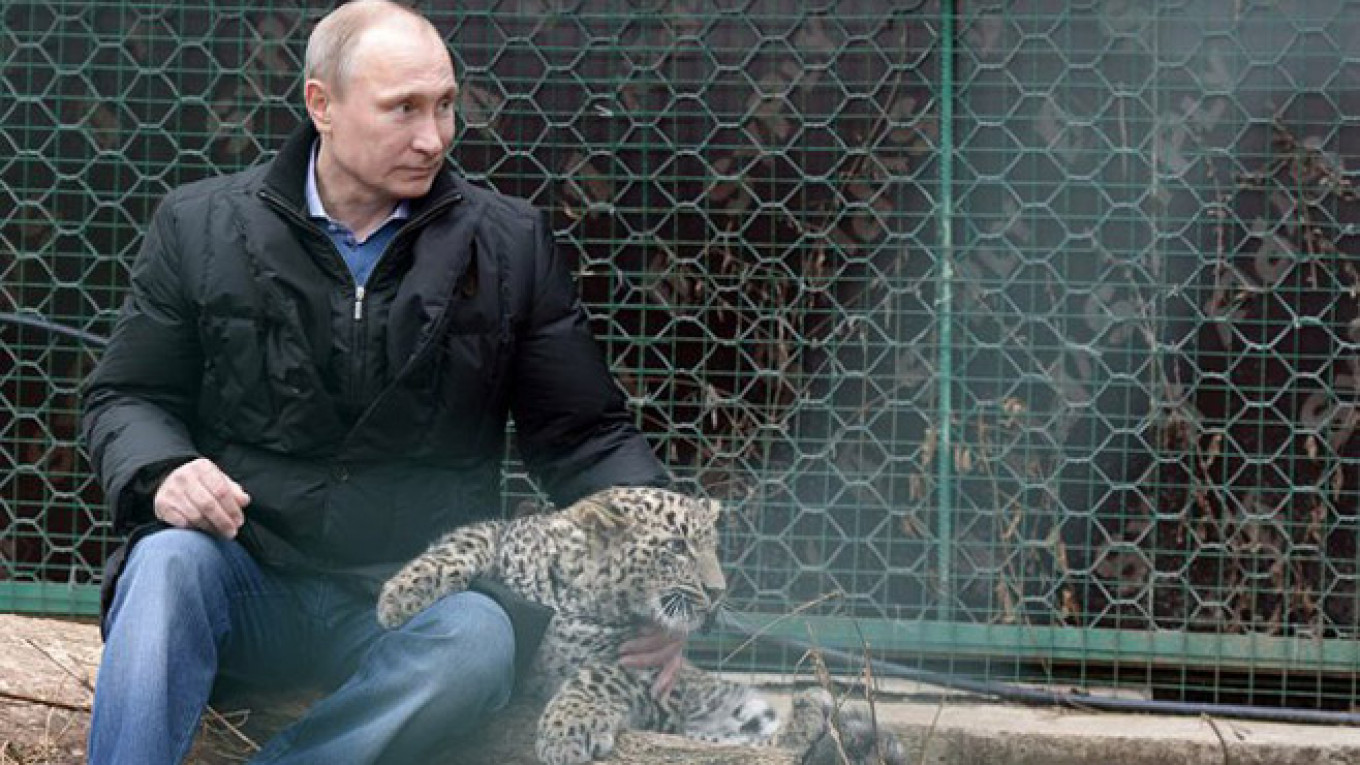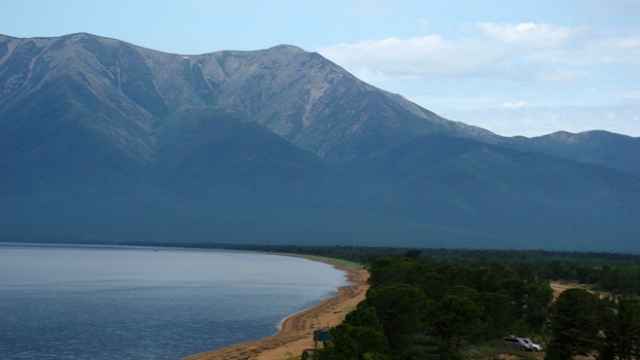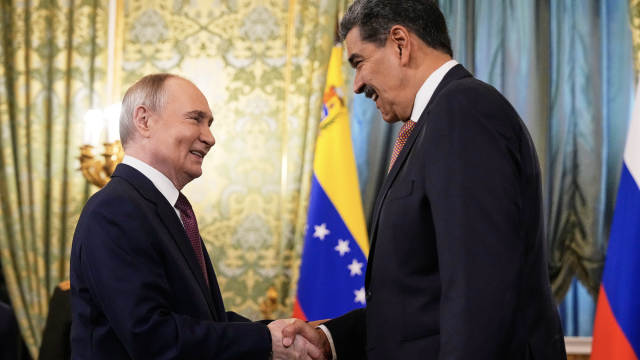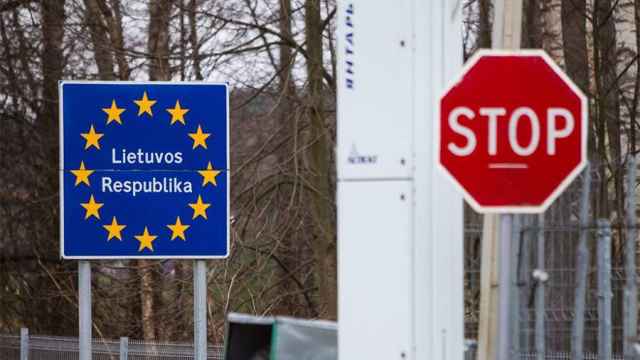Only twice in its history has UNESCO had to strike sites from its World Heritage List. But Russia now risks contributing a third case, thanks to plans to build a pipeline to China through protected land.
President Vladimir Putin said last week that Russia was ready to revive the "western route," a gas pipeline spanning the westernmost chunk of the Russian-Chinese border.
Echoing the sentiment, Gazprom head Alexei Miller said, also last week, that the state monopoly expected it would be ready to ink a deal on the matter in November.
The project, first announced by Putin in 2006, envisaged a pipeline through the Golden Mountains of Altai, a World Heritage site.
The plan was lambasted by environmentalists, and UNESCO threatened to move the Golden Mountains of Altai to the List of World Heritage in Danger last year, only relenting when Gazprom mothballed the "western route" until 2016.
But now the "western route" is on track to revival as Russia executes an "eastward turn," strengthening ties with Beijing to offset a crisis in relations with the West.
The Border Bottleneck
The Russian-Chinese border is 4,200 kilometers long and consists of two sections straddling Mongolia. The western section is a mere 50 kilometers long.
The western border is framed on either side by nature reserves. The Golden Mountains of Altai on the Russian side, comprising three wildlife reserves, some situated on hallowed ground of indigenous tribes, made the World Heritage list in 1998.
It would be geographically impossible for the "western route" to bypass the reserve — if the pipeline is to run directly from Russia to China. Any alternative routes would have to cut through either Kazakhstan or Mongolia.
A route through Kazakh or Mongolian flatland would be cheaper to build, said Altai-born liberal politician Vladimir Ryzhkov.
A direct Russia-China route would have to go through the Kanas mountain pass, 2,000 meters above sea level.
But neither Russia nor China wants the pipeline to pass through a third country, experts and politicians interviewed for this article said last Wednesday.
Beijing want to cut out the middleman, particularly in the case of Mongolia, whose relations with China are complicated, said Vasily Kashin, a leading expert on Russian-Chinese economic relations with the Moscow-based Institute of Far Eastern Studies.
And Moscow — despite amicable relations with both Kazakhstan and Mongolia — is wary of transit countries in light of its experience with Ukraine, which controls much of Russia's gas flows to Europe, said Ryzhkov.
Burial Mounds and Ecosystems
Snow leopards and Scythian mummies are among the losses Russia stands to incur in the name of geopolitically secure gas dollars, according to critics.
The large cats dominate the food chain of the Ukok Plateau, which comprises most of the UNESCO site.
Of the only 4,000 to 6,500 snow leopards that remain in the wild, some 200 of them are believed to live in Russia, according to the latest available — albeit still grossly outdated — estimates.
The area hosts a number of other endangered species as well, such as the black stork and the argali mountain sheep. The latter made headlines in 2009 after several high-profile regional and federal officials died in a helicopter crash while on a poaching trip. Carcasses of poached argali were found scattered amongst the wreckage.
But their habitat is under threat, as major construction would ravage the area's fragile tundra-like ecosystem, leaving damage that could take centuries to heal, said Andrei Petrov, who supervises the World Heritage program at Greenpeace Russia.
The project seems to contradict Putin's well-publicized fondness for rare wildlife, including the snow leopards. He has vocally endorsed a conservation effort for these felines and even personally chose the snow leopard to be one of the mascots of last winter's Olympics Games in Sochi.
Then there are the cultural and historical implications. Ukok is an ancient hotbed of nomadic civilizations; offshoots of the bronze-working Scythians lived in the area as far back as the sixth century B.C., and the Huns passed through the plateau en route to destroy the Roman Empire in the early first millennium A.D.
All of these societies left copious material evidence waiting to be uncovered. A case in point is the Siberian Ice Maiden, the uniquely preserved mummy of a young Scytho-Siberian noblewoman.
The 2,500-year-old mummy, nicknamed the "Altai Princess," makes for one of Russia's most impressive archeological finds ever — but her's was only one of some 600 burial mounds in the area, implying that still more "princes" and "princesses" from her warlike nation may still be resting in the ground.
The Ukok Plateau remains a holy site for the indigenous nations still residing in the Altai region, many of whom have forbidden people from entering the area full-stop, believing it to be home to their ancestral spirits.
Old habits die hard: In the Altai Republic, the locals continue to campaign for the Siberian Ice Maiden's reburial, with shamans blaming earthquakes, suicides and recent catastrophic flooding on her posthumous wrath over having been unearthed.
The Spectre of Delisting
The "western route" remains a tentative project: So far, Russia has steadied its focus on the upcoming Power of Siberia pipeline, which is meant to be pumping up to 61 billion cubic meters worth of eastern Siberian gas a year to China for the next three decades in accordance with a deal worth $400 billion.
But as China's economy expands and its coal deposits run out, China's need for energy is increasing rapidly, Kashin of the Institute of Far Eastern Studies said.
Gazprom's press service told The Moscow Times it would be "premature" to discuss a possible route. A company spokesman declined to say whether Gazprom had a new project to put on the table during the upcoming negotiations with China, or whether it will stick to the original, criticized one.
UNESCO's headquarters in Paris had not returned a request for comment in time for publication.
The UN watchdog dropped Oman's Arabian Oryx Sanctuary in 2007 because the nature reserve failed to protect its population of rare Arabian Oryx antelopes, and Germany's Dresden Elbe Valley was likewise cut in 2009 after the landscape view was marred by a new bridge.
Russia has 10 natural World Heritage sites — and all but two have been threatened by development projects ranging from resort facilities to mines and military bases, Greenpeace's Petrov said.
"We should be proud of those places, but instead we keep on cranking out insane plans to destroy them," Petrov said.
Contact the author at [email protected]
A Message from The Moscow Times:
Dear readers,
We are facing unprecedented challenges. Russia's Prosecutor General's Office has designated The Moscow Times as an "undesirable" organization, criminalizing our work and putting our staff at risk of prosecution. This follows our earlier unjust labeling as a "foreign agent."
These actions are direct attempts to silence independent journalism in Russia. The authorities claim our work "discredits the decisions of the Russian leadership." We see things differently: we strive to provide accurate, unbiased reporting on Russia.
We, the journalists of The Moscow Times, refuse to be silenced. But to continue our work, we need your help.
Your support, no matter how small, makes a world of difference. If you can, please support us monthly starting from just $2. It's quick to set up, and every contribution makes a significant impact.
By supporting The Moscow Times, you're defending open, independent journalism in the face of repression. Thank you for standing with us.
Remind me later.







